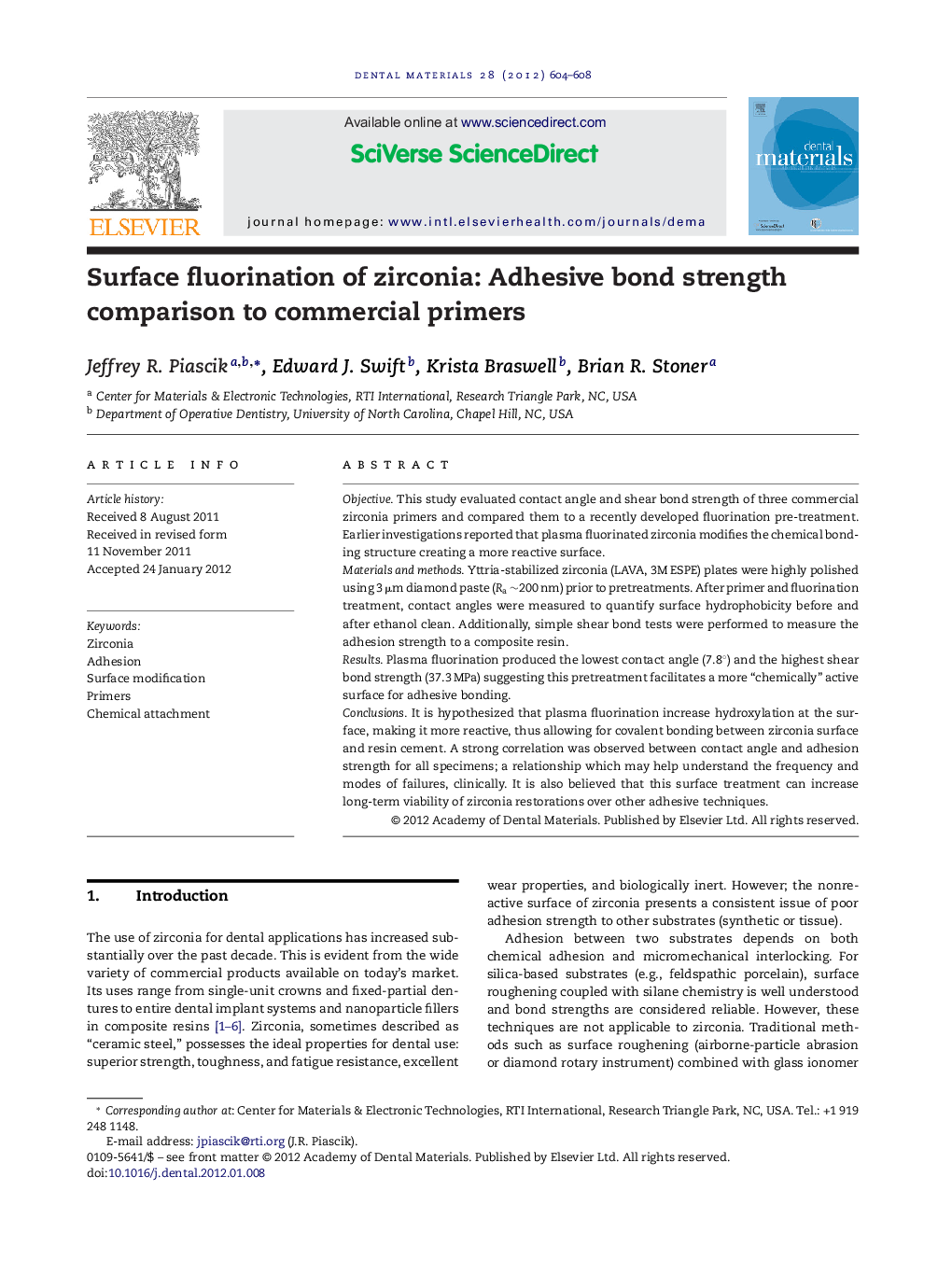| Article ID | Journal | Published Year | Pages | File Type |
|---|---|---|---|---|
| 1421558 | Dental Materials | 2012 | 5 Pages |
ObjectiveThis study evaluated contact angle and shear bond strength of three commercial zirconia primers and compared them to a recently developed fluorination pre-treatment. Earlier investigations reported that plasma fluorinated zirconia modifies the chemical bonding structure creating a more reactive surface.Materials and methodsYttria-stabilized zirconia (LAVA, 3M ESPE) plates were highly polished using 3 μm diamond paste (Ra ∼200 nm) prior to pretreatments. After primer and fluorination treatment, contact angles were measured to quantify surface hydrophobicity before and after ethanol clean. Additionally, simple shear bond tests were performed to measure the adhesion strength to a composite resin.ResultsPlasma fluorination produced the lowest contact angle (7.8°) and the highest shear bond strength (37.3 MPa) suggesting this pretreatment facilitates a more “chemically” active surface for adhesive bonding.ConclusionsIt is hypothesized that plasma fluorination increase hydroxylation at the surface, making it more reactive, thus allowing for covalent bonding between zirconia surface and resin cement. A strong correlation was observed between contact angle and adhesion strength for all specimens; a relationship which may help understand the frequency and modes of failures, clinically. It is also believed that this surface treatment can increase long-term viability of zirconia restorations over other adhesive techniques.
